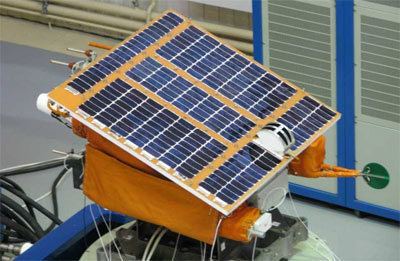Mission type Technology SATCAT no. 35868 Launch date 17 September 2009 | COSPAR ID 2009-049D | |
 | ||
Perigee 820 kilometres (510 mi) Apogee 827 kilometres (514 mi) Similar Nanosat‑1B, Progress M‑66, Progress M‑MIM2, PharmaSat, USA‑207 | ||
Universitetsky-Tatyana-2 is a small research and educational satellite mainly developed by Taiwan (National Cheng Kung University and National Central University) and Russia Moscow State University and launched on 17 September 2009 from Baikonur Cosmodrome on a Soyuz-2.1b rocket. This satellite was equally sponsored by Taiwan and Russia. Along with teamwork supported by Mexico and South Korea, the two Taiwanese institutions particularly contributed satellite computing systems, flight programmes as well as thermotic, magnetic, and digital data processing devices.
Mission objectives
The satellite is part of an international research and educational youth program of near-Earth space exploration. The mission's objectives are:
References
Universitetsky-Tatyana-2 Wikipedia(Text) CC BY-SA
